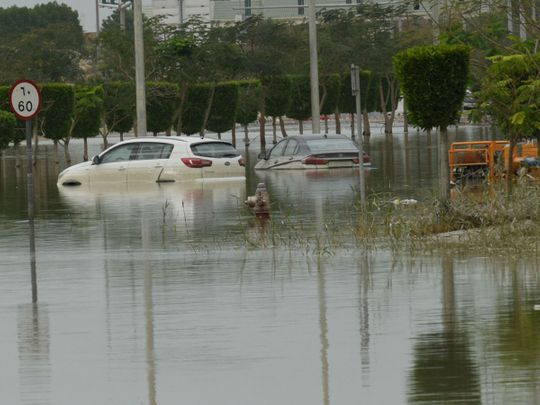
Flooding is very common in many parts of the world, with many countries having to deal with the havoc rainstorms create more than once a year. Our region has been fortunate not to have rain-related mayhem frequently. While this is a blessing, it also means that when the occasional heavy rain lashes out and the ensuing flood damages vehicles, car-owners are not familiar with ways to deal with it. If properly insured, costs for salvaging a flood-damaged car could be covered. However it is important to ask yourself whether it is worth getting it repaired at all.
This decision depends on several factors, including how deeply the car was submerged, for how long it was under water, and the kind of water that seeped in, among others. Here are a few steps you could take to restore a flood-damaged car.
1. Do not wait
The most vital step in trying to salvage a flood-damaged car is to clean out as much water and muck as soon as possible. The more you wait, the more the chances of mold and corrosion setting in. Although flooding caused by rain water isn’t as corrosive as ones caused by salt water, letting the water saturate can severely damage your vehicle’s interior, electronics and powertrain. In fact, a long-term flooded car isn’t worth repairing. If you must keep it, then be prepared to completely rebuild the car.
2. Do not start the engine.
Do not attempt to start the engine in a flooded car. Once water seeps into the crankcase, it mixes with the engine oil to form sludge, which has quite the opposite effect of lubrication. If you try to crank and engine filled with sludge, it locks up every moving part inside and could cause irreparable damage.
3. Assess the damage
Along with the duration of submersion, your repair options depend on the extent of the flooding and the level to which water rose inside the car. If the waterline is as high as the dashboard, it is advisable you discuss with your insurer the possibility of writing the car off and getting another. While the interior can be dried out and all the mechanical systems cleaned and re-lubed, the complex electrical systems and sensors could sustain long-term damage that can lead to pesky, expensive problems cropping up later. However, if the water level isn’t deep enough to damage the electronics, you can consider repairing it.
4. Find an experienced mechanic/garage
There are several good quality workshops and service centres in the country. However, because of the lack of exposure to frequent rain and flooding, not all of them will be adept and experienced at repairing a flood-damaged vehicle. So it is important that you identify an experienced mechanic, should you decide to go ahead and repair the car.
5. Make sure these are looked into
Even after finding the right garage and mechanic, it is vital that you make sure they look into every aspect of the flood damage and rectify those. This includes draining the engine of all the fluids, flushing it, replacing spark plugs, replacing the oil and filter, checking the fuel tank, draining it and checking the fuel system, checking transmission, transfer case and differential for any flooding, as well as flushing the brake system and power steering system. Apart from these mechanical checks, you should also make sure the garage strips out the entire interior and dries out the car by removing the seats, carpets and insulation and dries these after cleaning not just in the sun, but preferably using a heat gun. If you think they are not worth cleaning and drying, negotiate with your insurance company to get the seats and carpets replaced. Also, check the fuse box and the wiring network.



